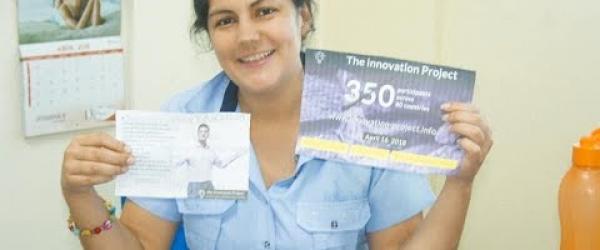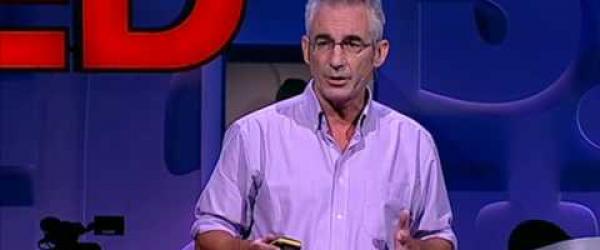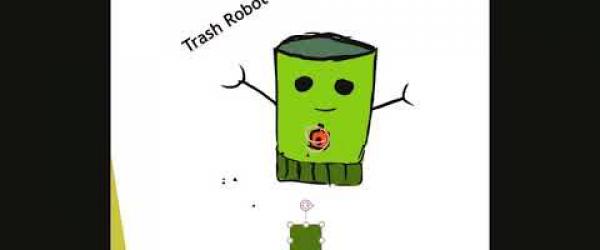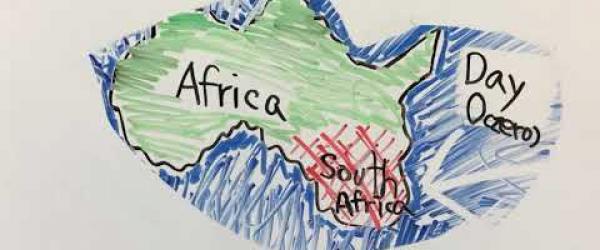The Innovation Project Week 2:
This week was challenging, because there was just so much to talk about within a small video/presentation. However we managed to group a few innovations/ innovative projects from households, communities, provinces within Southern Africa that have proven to, not only aid in lowering the country’s water consumption levels, but have also contributed to nation building and a more widespread “eco-friendly mindset”.
Firstly, how can innovation, applied, offer solutions to a dangerous and economically, socially and environmentally damaging problem?
Innovation is the the action or process of innovating and changing an old idea into a new, more beneficial one. This already solves many issues regarding the water crises and drought. When we think/change ideas we improve and develop, thus we ‘make it better’. This would aid in changing the distribution and management of water as an economic resource, due to the fact that there is enough water in the country, it is just not allocated properly or in the correct proportions. When we think innovatively, we as a people could change how our country’s water infrastructure operates, just as we had changed how our country’s social infrastructure operated in 1994. If we implement innovative ideas we could decrease water consumption, increase water infrastructure maintenance, increase sustainable consumption in other areas besides water and sanitation and even decrease our carbon footprint and negative influence on the environment. These goals are not out of reach, as innovative thinking has changed the lives of individuals or the better many times, for example: the invention of steam power increased the income, lifestyle and education levels, thus the HDI and GDP, of many countries, similar to the invention of modern computer technology and the invention of many new water saving methods that have increased environmental sustainability, allowing our future generations to continue thriving and improving, because that is the main goal of innovation, to develop, to improve to achieve, is it not?
Chosen SDG/s (Sustainable Development Goals):
Number 6: Clean Water and Sanitation
Number 12: Responsible Consumption and Production Patterns
Number 13: Climate Action
These Goals were all chosen based on our ‘South African Water Crisis’.
Innovations Regarding Clean Water and Sanitation:
UN Goals Related to Water and Sanitation:
By 2030, achieve universal and equitable access to safe and affordable drinking water for all
By 2030, achieve access to adequate and equitable sanitation and hygiene for all and end open defecation, paying special attention to the needs of women and girls and those in vulnerable situations
By 2030, improve water quality by reducing pollution, eliminating dumping and minimizing release of hazardous chemicals and materials, halving the proportion of untreated wastewater and substantially increasing recycling and safe reuse globally
By 2030, substantially increase water-use efficiency across all sectors and ensure sustainable withdrawals and supply of freshwater to address water scarcity and substantially reduce the number of people suffering from water scarcity
By 2030, implement integrated water resources management at all levels, including through transboundary cooperation as appropriate
By 2020, protect and restore water-related ecosystems, including mountains, forests, wetlands, rivers, aquifers and lakes
By 2030, expand international cooperation and capacity-building support to developing countries in water- and sanitation-related activities and programmes, including water harvesting, desalination, water efficiency, wastewater treatment, recycling and reuse technologies
Support and strengthen the participation of local communities in improving water and sanitation management
Facts and Stats (Statistics):
2.6 billion people have gained access to improved drinking water sources since 1990, but 663 million people are still without
At least 1.8 billion people globally use a source of drinking water that is fecally contaminated
Between 1990 and 2015, the proportion of the global population using an improved drinking water source has increased from 76 percent to 91 percent
But water scarcity affects more than 40 percent of the global population and is projected to rise. Over 1.7 billion people are currently living in river basins where water use exceeds recharge
2.4 billion people lack access to basic sanitation services, such as toilets or latrines
More than 80 percent of wastewater resulting from human activities is discharged into rivers or sea without any pollution removal
Each day,nearly 1,000 children die due to preventable water and sanitation-related diarrhoeal diseases
Hydropower is the most important and widely-used renewable source of energy and as of 2011, represented 16 percent of total electricity production worldwide
Approximately 70 percent of all water abstracted from rivers, lakes and aquifers is used for irrigation
Floods and other water-related disasters account for 70 percent of all deaths related to natural disasters
Innovation/s:
On 28 July 2010, through Resolution 64/292, the United Nations General Assembly explicitly recognized the human right to water and sanitation and acknowledged that clean drinking water and sanitation are essential to the realisation of all human rights, however By 2050, at least one in four people is likely to live in a country affected by chronic or recurring shortages of fresh water, according to UN (United Nations) and private studies conducted in 2017/2018.
Clean, accessible water for all is an essential part of the world we want to live in. There is sufficient fresh water on the planet to achieve this. But due to bad economics or poor water infrastructure,poor management and distribution of water and lack of resources to provide within the basic needs of an ever-growing positive population growth, every year millions of people, most of them children, die from diseases associated with inadequate water supply, ill-sanitation (due to forced use of unclean, unpurified and contaminated water) and hygiene.
Water scarcity, poor water quality and inadequate sanitation negatively impact food security, livelihood choices and educational opportunities for poor families across the world. Drought afflicts some of the world’s poorest countries, worsening hunger and malnutrition.
BUT:
There are many private/public organisations and scientific communities/fields that are determined to finding innovative solutions:
Innovations Within the Country:
Through the passing/implementation of water restrictions (intensity by level) and policies aiding in water saving.
Improving ‘bore-hole water technology’
‘Digitising our water supply or control purposes.
Using various water filters, such as the ‘PuffPastries’ water filter
Using sustainable energy sources to power water filters(solar power)
Collaborating with overseas scientists to increase sustainable infrastructure and to decrease water consumption
Education is the key for positive development. Educating people on safe water consumption will rapidly decrease waterborne disease infection and increase water supply/efficient water usage.
The ‘Hippo Roller’. Two engineers from Gauteng designed Hippo Roller to create easier access to water in impoverished communities. Many of South Africa’s communities lack basic access to clean drinkable water, and instead have to travel long distances and then carry the heavy buckets back. These buckets usually hold around 18 litres each. In response, the Hippo Roller can carry more than 90 litres at a time, which means fewer trips to collect water, and less strain on the physical condition of women. With more free time, children can attend school more frequently.Initially, the design was structured as a wheelbarrow with a low centre of gravity. However, the wheel was too expensive. This led them to reducing the design down to the wheel alone, so that it could contain the water and be pushed or pulled on the ground. The durable wheel has a lifespan of between five and seven years. The Hippo Roller initiative insists the government provides these communities with water on tap. However, acknowledging that this will take years to materialise, the initiative is distributing Hippo Rollers to make their lives easier. Although they have already distributed more than 27000 rollers to date, they have hardly covered a portion of what is needed.
Lastly, the ‘AquaTrap’. Mark Algra created Aquatrap to save water, by using recycled tyres. The Cape Town based creator did not come up with the idea entirely on his own, instead he credits an edition of Popular Mechanics. In the magazine he read that golf courses in the USA were taking tyres, cutting and splitting them open and then burying them. By doing this, golf courses were saving around 60 per cent of the water they normally used.Algra was able to get hold of the sidewalls of recycled tyres. Since the tread section was being used for making shoe soles, the entire product was being up-cycled. Algra constructed the Aquatrap by gluing an inner tube to the inside of the sidewall, creating a dish. Once buried beneath the soil, the trap collects excess water that has trickled down, which then lies available for the plant to consume at a later stage. The traps also make the soil warmer, which means that crops are more comfortable and so that they yield larger produce. Aquatrap has proven to double, and even triple, growth rates.Algra has been implementing his design at local schools. It assists in educating children on how to save water, providing them with knowledge that they then take home and share with their families and communities.
Innovations within the community:
A group of UCT (University of Cape Town) students have developed a way to make collecting water from a shower easier, says eNCA (also referred to as eNews Channel Africa) . Their in-shower water saving device has four interlocking flat containers that form a platform that sits at the bottom of the shower. The device collects 40 litres of water and the creators made it available on February of 2018.
IOL (Independent online) reports that three Stellenbosch University masters students in chemistry figured out how to eliminate water waste from their lab’s various systems. Before they created the Closed Cold Water Recycling System, their lab would waste perfectly potable municipal water when it cooled down the machines and washed all the equipment.
CapeTalk reports that 100 Cape Town schools are set to save thousands of litres of water, thanks to Dropula. The new device, designed by Professor Thinus Booysen of Stellenbosch University, combines a metre and an electronic dashboard to monitor water usage. The smart-meter attaches to a municipal metre to alert the dashboard of increased usage. The dashboard can identify where and why there was a spike, and the school administration can investigate and decrease the usage accordingly.
Garden ResQ Grey Water Systems, a Fish Hoek-based company, have designed a simple system to quell your domestic water wastage. This simple garden greywater system connects to your showers and sinks, collects the greywater and distributes it in your garden.
Due to the water crisis, a public Facebook group called Water Shedding Western Cape has cropped up and we found some pretty amazing ideas. One user designed a series of interlocking pipes as a water storage device for people who don’t have the yard space for a water storage tank. It uses plastic piping, and for every 10 metres of pipe, it can store up to 78 litres of water. Some fellow enthusiasts have suggested painting the rig black and having it in the sun, meaning the water would warm up. Hook it up to a rainwater collector and you’ve got yourself a handy storage device.
Mistifi. Available in Cape Town, Mistifi is a mist nozzle that can fit onto most taps. The product is incredibly easy to install and doesn't require a plumber. The device dispenses 800 ml of water per minute (compared to the average tap that dispenses 9L of water per minute!), which is roughly nine times less. The nozzle sells for R95 each.
Innovations within the household:
The successful implementation of boreholes for underground water
The use of greywater throughout the household/community
The phrase ‘if it’s yellow let it mellow, i it is brown lush it down’ has saved much toilet water (6l/flush).
Reusing wasted shower water.
Collecting rainwater
Household brands such as ‘Loomy’ have allowed us as consumers to continue living hygienically by neutralizing urine, and killing the harmful bacteria in the urine, that lays dormant in the toilet, until it is flushed
It is save to infer that we, as South-Africans, have learnt how to save water and live more sustainably the hard way, but we as a group, as a unit, as the rainbow nation, have achieved what only few other countries could. South African citizens, especially those of the Cape Town region, epitomise the phrase ‘reuse-reduce-recycle’.
Responsible Consumption and Production Patterns:
Sustainable consumption and production is about promoting resource and energy efficiency, sustainable infrastructure, and providing access to basic services, green and decent jobs and a better quality of life for all. Its implementation helps to achieve overall development plans, reduce future economic, environmental and social costs, strengthen economic competitiveness and reduce poverty.
Sustainable consumption and production aims at “doing more and better with less,” increasing net welfare gains from economic activities by reducing resource use, degradation and pollution along the whole lifecycle, while increasing quality of life. It involves different stakeholders, including business, consumers, policy makers, researchers, scientists, retailers, media, and development cooperation agencies, among others.
It also requires a systemic approach and cooperation among actors operating in the supply chain, from producer to final consumer. It involves engaging consumers through awareness-raising and education on sustainable consumption and lifestyles, providing consumers with adequate information through standards and labels and engaging in sustainable public procurement, among others
.
If South Africa fully implements sustainable and effective methods of consumption, production and trade, our negative impact on the environment will decrease, we will move from an industrialized nation to a technological nation, trade/foreign investments will increase, employees/employers will earn more, pay more tax and increase the GDP/capita, increased effectiveness will lead to focus on social aspects, increasing education to increase the level of skilled and qualified individuals, thus further improving work productiveness, health and welfare(HDI) of the workforce and the country.this will lead to an increase in development and power in the global economy.
UN Goals Related to Sustainable Production and Consumption Patterns:
Implement the 10-year framework of programmes on sustainable consumption and production, all countries taking action, with developed countries taking the lead, taking into account the development and capabilities of developing countries
By 2030, achieve the sustainable management and efficient use of natural resources
By 2030, halve per capita global food waste at the retail and consumer levels and reduce food losses along production and supply chains, including post-harvest losses
By 2020, achieve the environmentally sound management of chemicals and all wastes throughout their life cycle, in accordance with agreed international frameworks, and significantly reduce their release to air, water and soil in order to minimize their adverse impacts on human health and the environment
By 2030, substantially reduce waste generation through prevention, reduction, recycling and reuse
Encourage companies, especially large and transnational companies, to adopt sustainable practices and to integrate sustainability information into their reporting cycle
Promote public procurement practices that are sustainable, in accordance with national policies and priorities
By 2030, ensure that people everywhere have the relevant information and awareness for sustainable development and lifestyles in harmony with nature
Support developing countries to strengthen their scientific and technological capacity to move towards more sustainable patterns of consumption and production
Develop and implement tools to monitor sustainable development impacts for sustainable tourism that creates jobs and promotes local culture and products
Rationalize inefficient fossil-fuel subsidies that encourage wasteful consumption by removing market distortions, in accordance with national circumstances, including by restructuring taxation and phasing out those harmful subsidies, where they exist, to reflect their environmental impacts, taking fully into account the specific needs and conditions of developing countries and minimizing the possible adverse impacts on their development in a manner that protects the poor and the affected communities
Facts and Stats:
Each year, an estimated one third of all food produced – equivalent to 1.3 billion tonnes worth around $1 trillion – ends up rotting in the bins of consumers and retailers, or spoiling due to poor transportation and harvesting practices
If people worldwide switched to energy efficient light bulbs the world would save US$120 billion annually
Should the global population reach 9.6 billion by 2050, the equivalent of almost three planets could be required to provide the natural resources needed to sustain current lifestyles
Water
Less than 3 percent of the world’s water is fresh (drinkable), of which 2.5 percent is frozen in the Antarctica, Arctic and glaciers. Humanity must therefore rely on 0.5 percent for all of man’s ecosystems’ and fresh water needs.
Man is polluting water faster than nature can recycle and purify water in rivers and lakes.
More than 1 billion people still do not have access to fresh water.
Excessive use of water contributes to the global water stress.
Water is free from nature but the infrastructure needed to deliver it is expensive.
Energy
Despite technological advances that have promoted energy efficiency gains, energy use in OECD (Organization for Economic Cooperation and Development) countries will continue to grow another 35 percent by 2020. Commercial and residential energy use is the second most rapidly growing area of global energy use after transport.
In 2002 the motor vehicle stock in OECD countries was 550 million vehicles (75 percent of which were personal cars). A 32 percent increase in vehicle ownership is expected by 2020. At the same time, motor vehicle kilometres are projected to increase by 40 percent and global air travel is projected to triple in the same period.
Households consume 29 percent of global energy and consequently contribute to 21 percent of resultant CO2 emissions.
One-fifth of the world’s final energy consumption in 2013 was from renewables.
Food
While substantial environmental impacts from food occur in the production phase (agriculture, food processing), households influence these impacts through their dietary choices and habits. This consequently affects the environment through food-related energy consumption and waste generation.
1.3 billion tonnes of food is wasted every year while almost 1 billion people go undernourished and another 1 billion hungry.
Overconsumption of food is detrimental to our health and the environment.
2 billion people globally are overweight or obese.
Land degradation, declining soil fertility, unsustainable water use, overfishing and marine environment degradation are all lessening the ability of the natural resource base to supply food.
The food sector accounts for around 30 percent of the world’s total energy consumption and accounts for around 22 percent of total Greenhouse Gas emissions.
Increasing sustainability is mutualistically beneficial, yet it requires much effort, a generous amount of cheap resources and development in many fields, including technology.
Take Urgent Action to Combat Climate Change and its Impacts
Climate change is now affecting every country on every continent. It is disrupting national economies and affecting lives, costing people, communities and countries dearly today and even more tomorrow.
People are experiencing the significant impacts of climate change, which include changing weather patterns, rising sea level, and more extreme weather events. The greenhouse gas emissions from human activities are driving climate change and continue to rise. They are now at their highest levels in history. Without action, the world’s average surface temperature is projected to rise over the 21st century and is likely to surpass 3 degrees Celsius this century—with some areas of the world expected to warm even more. The poorest and most vulnerable people are being affected the most.
Affordable, scalable solutions are now available to enable countries to leapfrog to cleaner, more resilient economies. The pace of change is quickening as more people are turning to renewable energy and a range of other measures that will reduce emissions and increase adaptation efforts.
But climate change is a global challenge that does not respect national borders. Emissions anywhere affect people everywhere. It is an issue that requires solutions that need to be coordinated at the international level and it requires international cooperation to help developing countries move toward a low-carbon economy.
An example of addressing climate change on a global scale:
countries adopted the Paris Agreement at the COP21 in Paris on 12 December 2015. The Agreement entered into force shortly thereafter, on 4 November 2016. In the agreement, all countries agreed to work to limit global temperature rise to well below 2 degrees Celsius, and given the grave risks, to strive for 1.5 degrees Celsius.Implementation of the Paris Agreement is essential for the achievement of the Sustainable Development Goals, and provides a roadmap for climate actions that will reduce emissions and build climate resilience.
UN Goals for Addressing Climate Change:
Strengthen resilience and adaptive capacity to climate-related hazards and natural disasters in all countries
Integrate climate change measures into national policies, strategies and planning
Improve education, awareness-raising and human and institutional capacity on climate change mitigation, adaptation, impact reduction and early warning
Implement the commitment undertaken by developed-country parties to the United Nations Framework Convention on Climate Change to a goal of mobilizing jointly $100 billion annually by 2020 from all sources to address the needs of developing countries in the context of meaningful mitigation actions and transparency on implementation and fully operationalize the Green Climate Fund through its capitalization as soon as possible
Promote mechanisms for raising capacity for effective climate change-related planning and management in least developed countries and small island developing States, including focusing on women, youth and local and marginalized communities
Acknowledging that the United Nations Framework Convention on Climate Change is the primary international, intergovernmental forum for negotiating the global response to climate change.
Facts and Stats:
According to the Intergovernmental Panel on Climate Change, from 1880 to 2012, average global temperature increased by 0.85°C. To put this into perspective, for each 1 degree of temperature increase, grain yields decline by about 5 per cent. Maize, wheat and other major crops have experienced significant yield reductions at the global level of 40 megatons per year between 1981 and 2002 due to a warmer climate.
Oceans have warmed, the amounts of snow and ice have diminished and sea level has risen. From 1901 to 2010, the global average sea level rose by 19 cm as oceans expanded due to warming and ice melted. The Arctic sea ice extent has shrunk in every successive decade since 1979, with 1.07 million km² of ice loss every decade
Given current concentrations and on-going emissions of greenhouse gases, it is likely that by the end of this century, the increase in global temperature will exceed 1.5°C compared to 1850 to 1900 for all but one scenario. The world’s oceans will warm and ice melt will continue. Average sea level rise is predicted as 24 – 30cm by 2065 and 40-63cm by 2100. Most aspects of climate change will persist for many centuries even if emissions are stopped
Global emissions of carbon dioxide (CO2) have increased by almost 50 per cent since 1990
Emissions grew more quickly between 2000 and 2010 than in each of the three previous decades
It is still possible, using a wide array of technological measures and changes in behaviour, to limit the increase in global mean temperature to two degrees Celsius above pre-industrial levels
Major institutional and technological change will give a better than even chance that global warming will not exceed this threshold






 By brainstorming and help of internet the students find out...
By brainstorming and help of internet the students find out...
 After learning about UN Sustainable Development Goals at...
After learning about UN Sustainable Development Goals at...
 We can use plastic bottles for a plant
this is a way to...
We can use plastic bottles for a plant
this is a way to...
 Students simulate a debate in Ted Talk about the Pros and...
Students simulate a debate in Ted Talk about the Pros and...
 Students of Grade 4 designed a prototype of a SDG invention...
Students of Grade 4 designed a prototype of a SDG invention...

























































